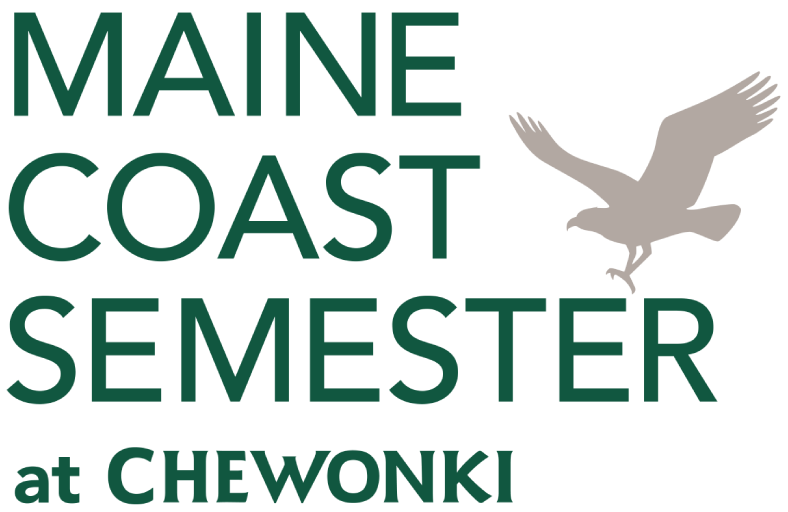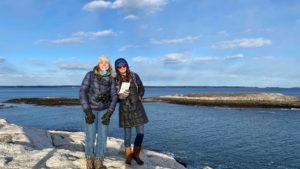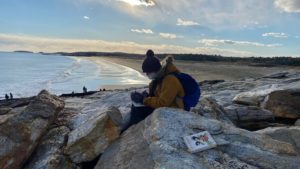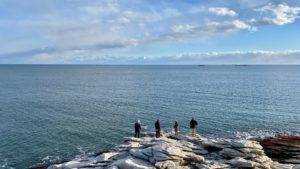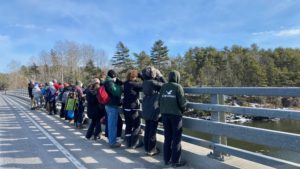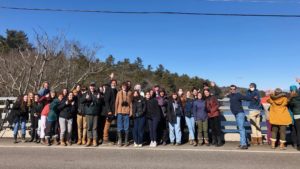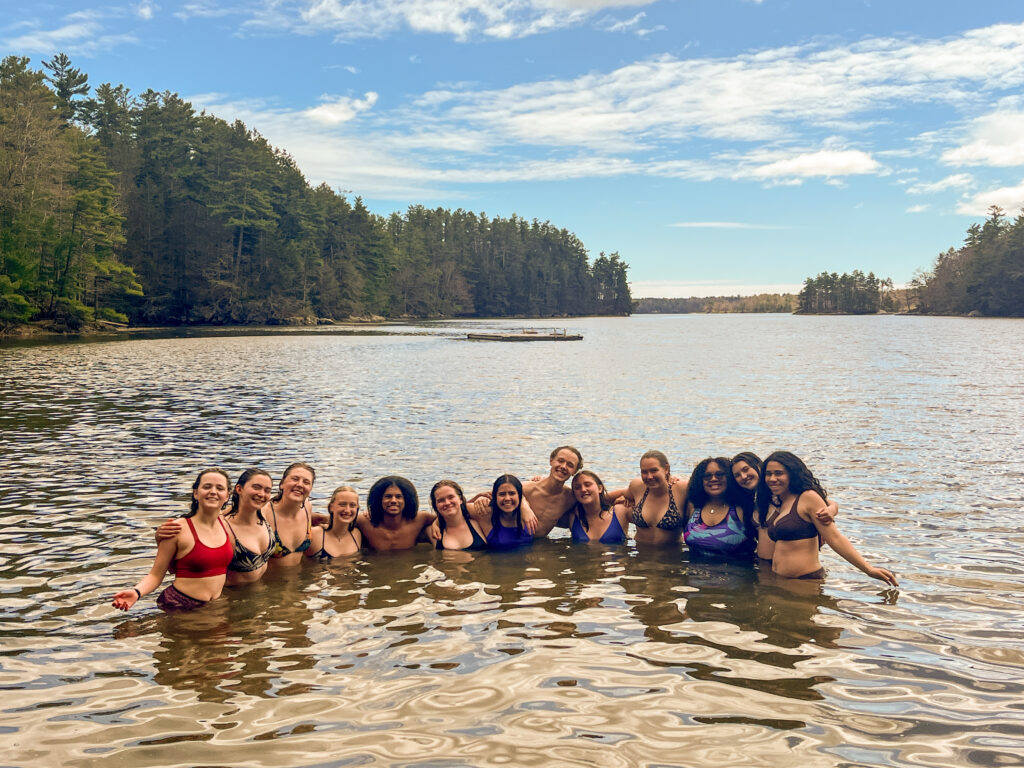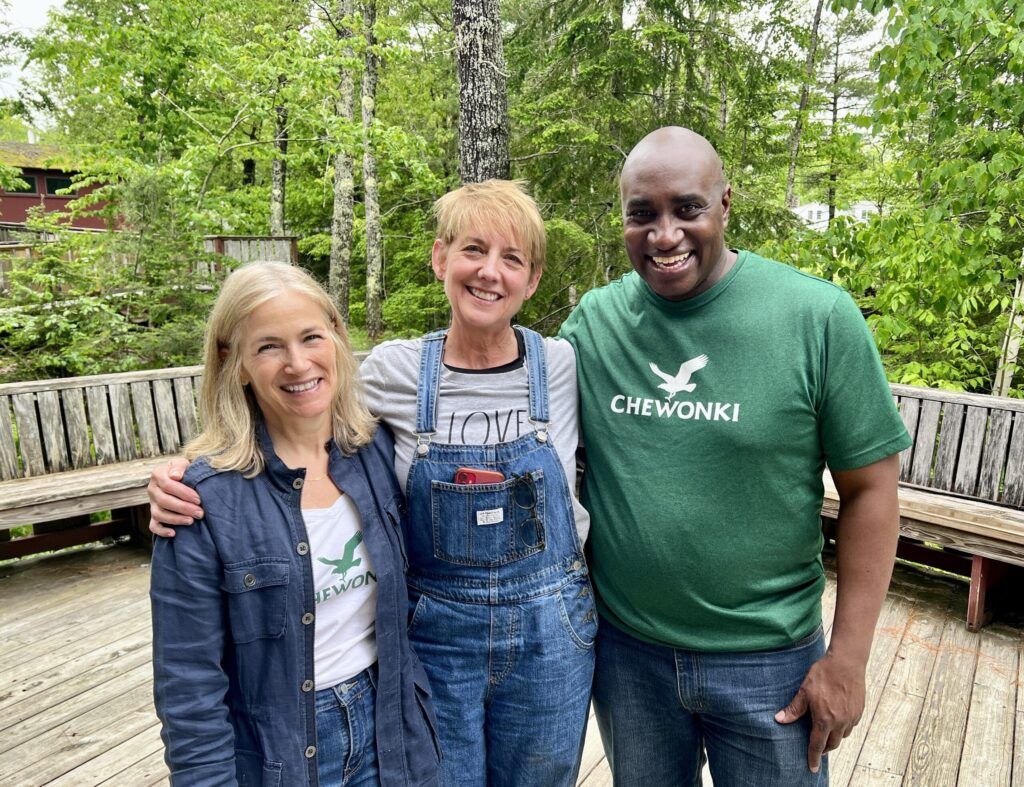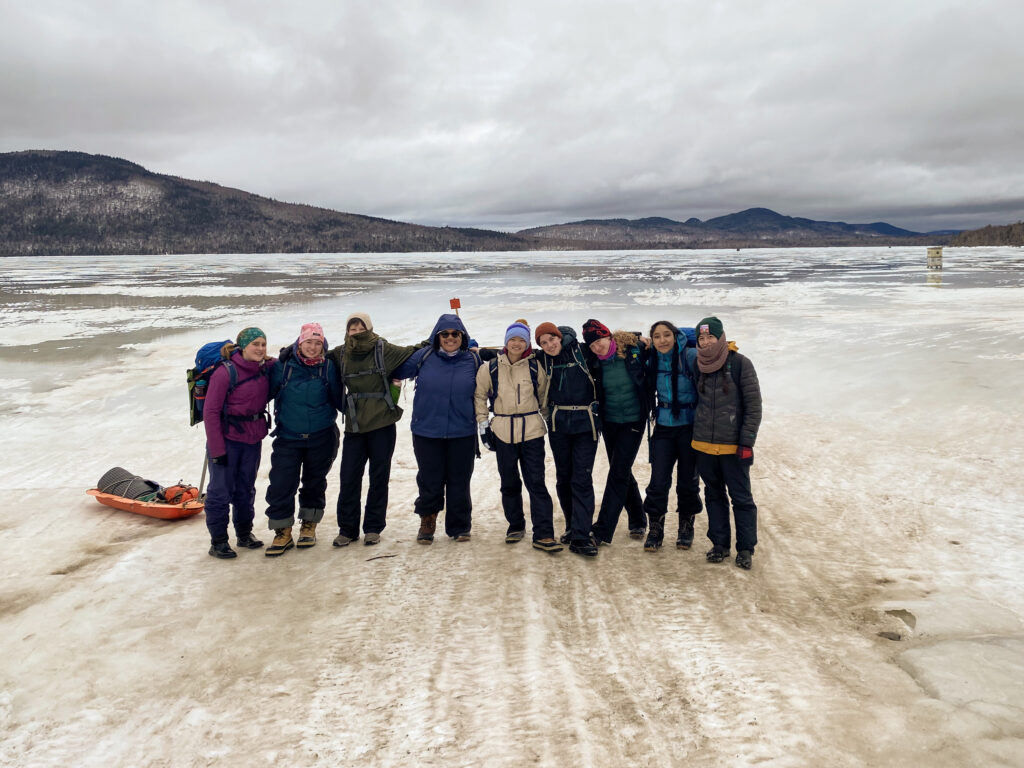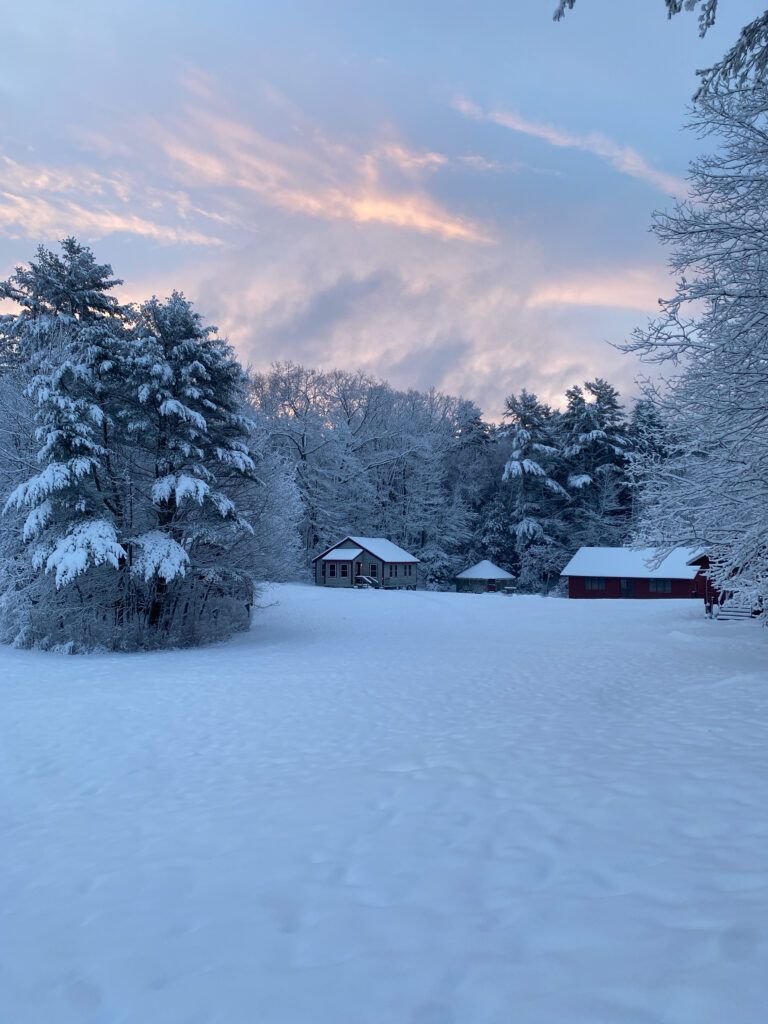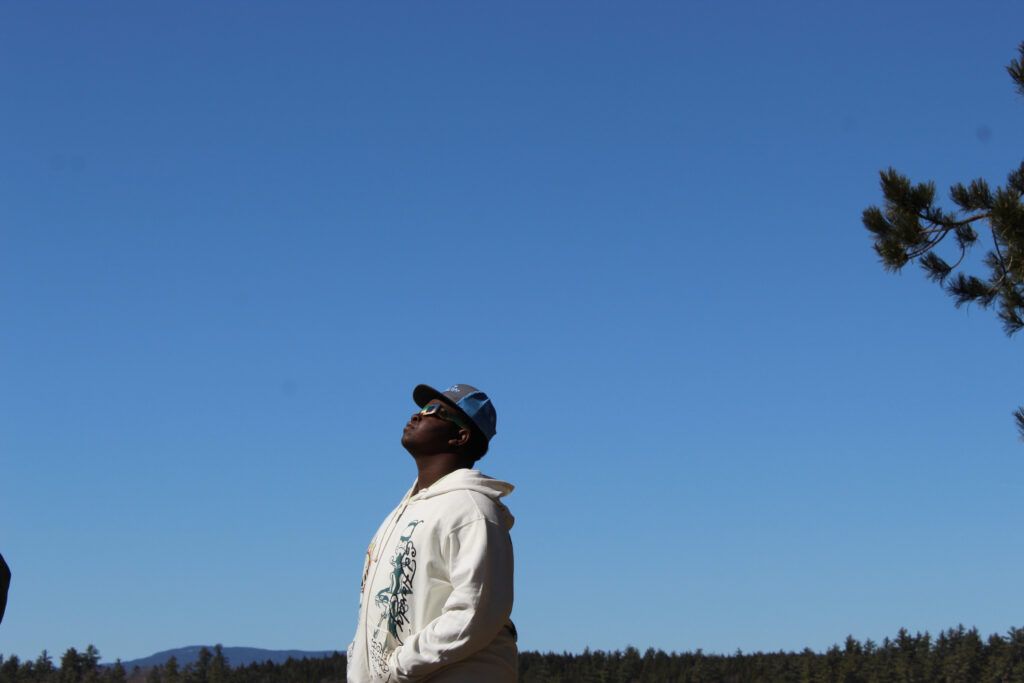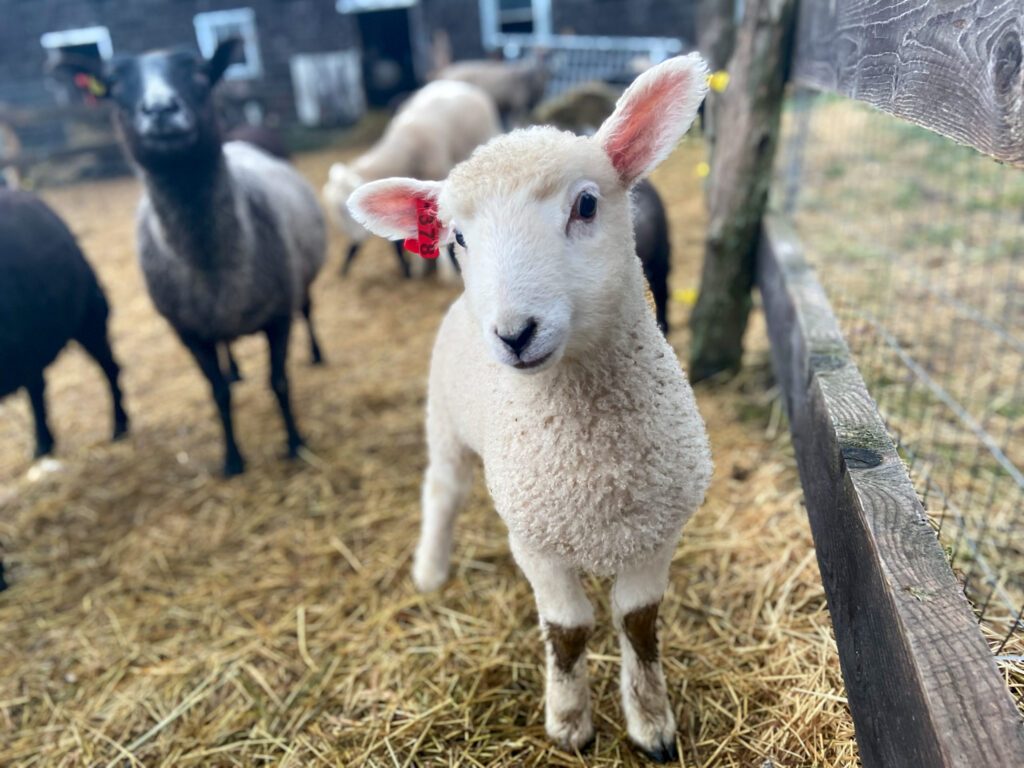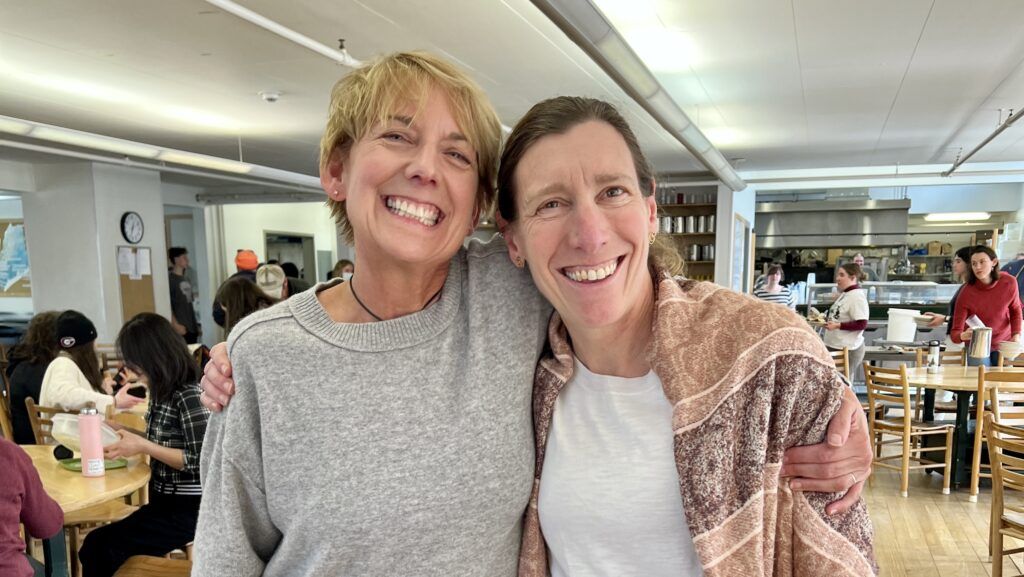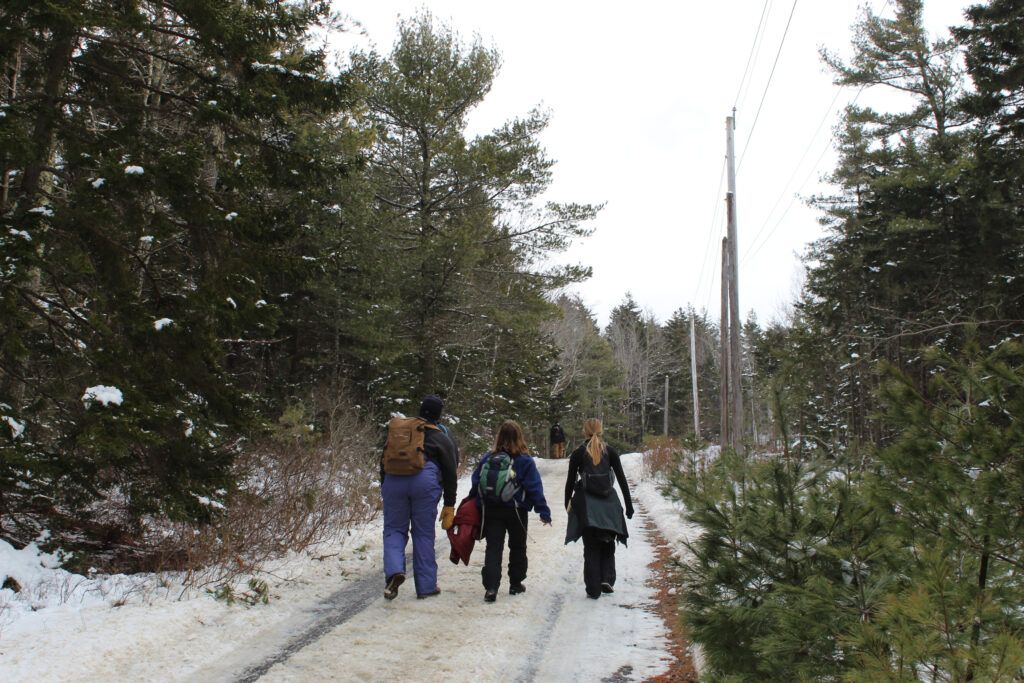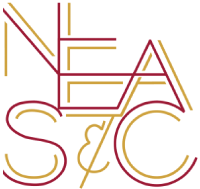When I first came to Chewonki, I immediately knew it was the right place for me. As somebody who loves birds, finding a place for education while also being able to connect with the natural world is extremely important to me. The second I saw the first building on campus, I could see just how much the Chewonki community compliments the land instead of disturbing it. With that, Chewonki has created a space where creatures of all different sizes freely roam around almost any part of the 400 acre campus. That includes deer, raccoons, possums, porcupines, minks, and groundhogs. But, today, I am going to talk about birds.
Birds have always been such a huge part of how I live my life that living in a place without them is really not an option for me. Just as I stepped out of my car for the first time, I heard golden-crowned kinglets, red crossbills, and snow bunting. The birds almost knew I was coming. I now know that I was in for such a ride. One of my favorite teachers, Megan McOsker, asked me on the first day what types of birds I wanted to see. I listed tons of birds like alcids, finches, and birds of prey of all kinds. She didn’t like my answer because there was one special bird around at the time: the Steller’s Sea Eagle.
The Steller’s Sea Eagle is the largest Eagle in the world and is originally from Russia. This bird was the first-ever record in the lower 48 states, and it was a once-in-a-lifetime type of bird. As a semester, we tried to see it two times and failed both. Most people didn’t believe we were ever going to see it, but I had my eyes on the prize. My friend Weston Barker (Wes), another birder who is from Maine, also wanted to see it. We woke up one Friday morning to a report of the bird at Arrowsic Bridge, which is about 10 minutes away from Chewonki. At lunch, the bird was still being seen, so I, along with 3 or 4 other students, was going to go see it. After many loud conversations across the dining hall, one thing led to another and essentially the whole semester ended up going out. That is one of the best Chewonki moments in the history of Chewonki (and I say that with confidence), and the moment when we saw that bird was one of the best moments of my entire life. That moment brought me and my friend Wes much closer, and we knew we would be friends forever.
Wes and I would bird constantly around and have an amazing time together. In fact, during Spring break, Wes and I birded together for a week. Instead of him going home to his house, he went home with me, and we birded around all of Massachusetts from the Berkshires to the tip of Cape Cod. He had not traveled outside of Maine in a while, so he was very excited to go birdwatching in Massachusetts. My time with him on Cape Cod gave me some of the best bird-related memories of my whole life. I absolutely loved the time I spent with him and that was only thanks to Chewonki! When we got back from break, it was almost a whole new world back on campus, to a birder at least.
Before we had left for break, winter ducks like common goldeneye, bufflehead, and red-breasted mergansers were all around the perimeter of the Neck. Now, I was hearing eastern phoebes and pine warblers, which are signs of early spring to a birder. The trees still had not leafed yet, but the birds told me that the seasons had changed. Chewonki Neck had really transformed after the break. The ice was off the ground and there was completely open water for the first time since I had arrived on January 22. The common loons were just beginning to change into breeding plumage, but they were starting to disappear as well. As the season continued, Wes and I watched more and more winter species disappear by the day, so it was a little bit dull for a little bit. But, just as the winter birds left, almost within a week, new spring migrants started to arrive.
Before we knew it, birds like black-and-white warblers, yellow-rumped warblers, Baltimore orioles, ruby-throated hummingbirds, and barn swallows started to show up. Wes and I went out for hours on Sunday to look for new spring migrants. We found some really amazing birds like northern waterthrush, Tennessee warbler, Nashville warbler, ovenbirds, and so so many more. I knew that Chewonki would be a special place, but I could not imagine the vast amount of bird diversity we would have here on Chewonki Neck. The many different Ecosystems we have here provide an amazing mix of all sorts of species. I have been keeping a list of every species we have seen while being here on campus, and I believe we are up to 139 as of late, and my goal is to get to 150 species. The highlights have definitely been the Steller’s Sea Eagle, a Golden Eagle, and an Orchard Oriole, all of which are rare in the state of Maine. While rare birds are amazing, birds that are expected can be just as awesome.
For my Natural History Final Project, I went out and looked out on the Neck for birds that are breeding. I found a total of 66 nests all along the Neck with 32 species breeding. I did a survey in conjunction with the Maine Breeding Bird Atlas, which I reported all of my species to throughout the semester. I was very happy that I got to make a website of all of the birds along the Neck, and then I got to present that to my class as the final science project of the semester. I am sad that the semester is coming to an end, but I am happy I got to even incorporate birding into my final project.
Overall, Chewonki has been one of the best experiences of my life, and I would really not trade it for anything else in the world. I have learned so much about the natural world and about myself. I have made friends that I can never forget. I had the opportunity to lead a bird walk for the Trustees of Chewonki, and they were all very interested and engaged in the walk. That just proves how deep the roots are here in the natural world. No matter who you are at Chewonki, nature will always be a part of your body, heart, and mind. I know that I can never forget about this place, and I definitely don’t want to either.
Jaden Thompson, Milton Academy, Needham, MA
